A free VPS offers users access to a virtualized environment at no cost, providing a unique opportunity to experience the benefits of a VPS without financial commitment. However, free VPS often comes with limitations, such as reduced resources, limited support and potential restrictions on usage. Despite these constraints, it can be an excellent starting point for those looking to explore VPS without the upfront costs. In this article, VinaHost will explore what a free VPS is, how it works, and highlight some of the top free VPS providers available today!
1. Overview of Virtual Private Server
1.1. What is VPS?
A Virtual Private Server (VPS) is a type of hosting service that uses virtualization technology to divide a physical server into multiple virtual servers. Each VPS operates independently, with its own dedicated resources like CPU, RAM, and storage, allowing users to host websites or applications with greater control and customization compared to shared hosting.
A VPS offers more flexibility, security, and performance, making it ideal for businesses or individuals who need a more powerful hosting solution without the cost of a dedicated server.
1.2. What is Free VPS?
A Free VPS refers to a Virtual Private Server that is offered at no cost, typically by hosting providers as part of a promotional offer or a limited-time trial. Free VPS services allow users to test out VPS hosting without any financial commitment. However, these free versions often come with limitations such as reduced resources, lower performance, and restricted support.
Free VPS is useful for beginners or those looking to experiment with best VPS hosting before committing to a paid plan, but it may not be suitable for high-demand applications or business-critical websites due to its limitations.

1.3. Why Use a VPS?
A VPS provides a balance of control, flexibility, performance, and cost-effectiveness, making it an excellent choice for a wide range of websites and applications:
Control and flexibility:
- You have full administrative control over your VPS, allowing you to install and configure software as needed.
- You can tailor your VPS environment to your specific requirements, ensuring optimal performance and security.
Dedicated resources:
- Unlike shared hosting, where resources are shared among multiple websites, a VPS provides dedicated resources, ensuring consistent performance.
- You can easily scale your VPS up or down to accommodate changing resource needs, such as increased traffic or data storage requirements.
Isolation and security:
- Your VPS is isolated from other VPS on the same physical server, providing a higher level of privacy and security.
- You have control over your VPS’s security settings, allowing you to implement measures like firewalls, intrusion detection systems, and regular updates.
Cost-effective:
- VPS provides a cost-effective option compared to dedicated server, as you only pay for the what you need.
- By sharing the underlying physical server with other VPS, you can benefit from economies of scale.
Reliability and performance:
- VPS providers often offer prioritized support, ensuring that your issues are addressed promptly.
- VPS environments are typically optimized for performance, with features like SSD storage and advanced caching.
Also read: What is SSD VPS Hosting? | Everything You Need to Know
2. Free VPS vs Paid VPS: What’s the Difference?
While both free and paid VPS (Virtual Private Server) options offer virtualized server environments, they differ significantly in terms of resources, performance, features, and support.
2.1. Advantages of Free VPS
Dedicated resources: Unlike shared hosting, VPS provides dedicated CPU, RAM, and storage, ensuring that your website or application performs reliably without being affected by other users on the same server.
Full control and customization
- VPS hosting typically grants you root access, allowing complete control over the server’s environment. You can install custom software, configure settings, and manage security protocols as needed.
- Tailor the server to your specific needs, optimizing it for performance, security, and functionality.
Cost-free access: Free VPS services allow you to access VPS hosting without spending money, making it ideal for testing, learning, or experimenting with server configurations.
Learning opportunity: Free VPS can be a valuable tool for beginners who want to learn server management, Linux, or website deployment without any financial risk.
Trial for paid services: Many hosting companies offer free VPS as a trial, giving you a chance to test their services before committing to a paid plan.
Basic hosting needs: Free VPS can be suitable for hosting small, low-traffic websites, personal projects, or development environments that don’t require high performance.
2.2. Limitations of Free VPS
Limited resources:
- Free VPS plans typically come with limited CPU, RAM, and storage, which may not be sufficient for more demanding applications or websites.
- There may be restrictions on bandwidth, affecting your site’s ability to handle traffic and deliver content quickly.
Minimal support:
- Free VPS services often offer limited or no customer support, leaving you to troubleshoot issues on your own.
- The lack of dedicated support can lead to prolonged downtime or unresolved technical problems.
Restricted features:
- Free VPS plans might not include full root access or the ability to customize the server environment to your needs.
- Advanced features like automated backups, enhanced security measures, or premium control panels may not be available.
Reliability issues:
- Free VPS services may not provide uptime guarantees, leading to potential downtime and an unstable online presence.
- Performance may fluctuate, especially during peak times, which can lead to slower load times and a poor user experience.
Short trial periods: Many free VPS offers are limited to short trial periods, after which you’ll need to upgrade to a paid plan to continue using the service.
2.3. Choosing the Right Option for Your Needs
When opting for a VPS package, you need to consider the following factors:
- Resource requirements: Determine the amount of CPU, RAM, storage, and bandwidth your website or application needs.
- Scalability: If your website or application is likely to grow, choose a VPS provider that offers easy scalability options.
- Control panel: Consider the ease of use and features of the control panel provided by the VPS provider.
- Support: Evaluate the quality and responsiveness of the VPS provider’s customer support.
- Cost: Compare the pricing of different VPS providers and ensure that the cost aligns with your budget.
If you have limited resources and are just starting out, a free VPS might be a suitable option for testing and experimentation. However, if you require consistent performance, reliability, and advanced features, a paid VPS plan is likely the better choice.
You can take a look to the key differences between free and paid VPS, helping you understand the trade-offs and benefits of each option:
| Feature | Free VPS | Paid VPS |
| Cost | No cost, often promotional or trial-based | Monthly or yearly fee based on resources and features |
| Resources | Limited CPU, RAM, storage, and bandwidth | Higher and customizable resources, including CPU, RAM, and storage |
| Performance | Lower and less consistent | High and stable, tailored to your needs |
| Support | Basic or no support | Full customer support, often 24/7 |
| Security | Basic security, limited options | Advanced security features and options available |
| Customization | Limited customization, restricted access | Full root access, extensive customization |
| Uptime Guarantee | Often no uptime guarantee, possible downtime | Uptime guarantee (usually 99.9% or higher) |
| Trial Period | Typically short-term or trial-based | Long-term use, scalable plans |
| Suitability | Best for testing, learning, or small, non-critical projects | Ideal for business websites, applications, and high-traffic sites |
3. Top Free VPS Providers
While paid VPS options offer extensive features, several top providers offer free or trial-based VPS services that allow users to test their platforms before committing to a full plan. These free VPS options can be a great way to explore different platforms, experiment with configurations, and even run smaller projects without initial costs. Below are some of the leading free VPS providers:
3.1. Google Cloud Platform
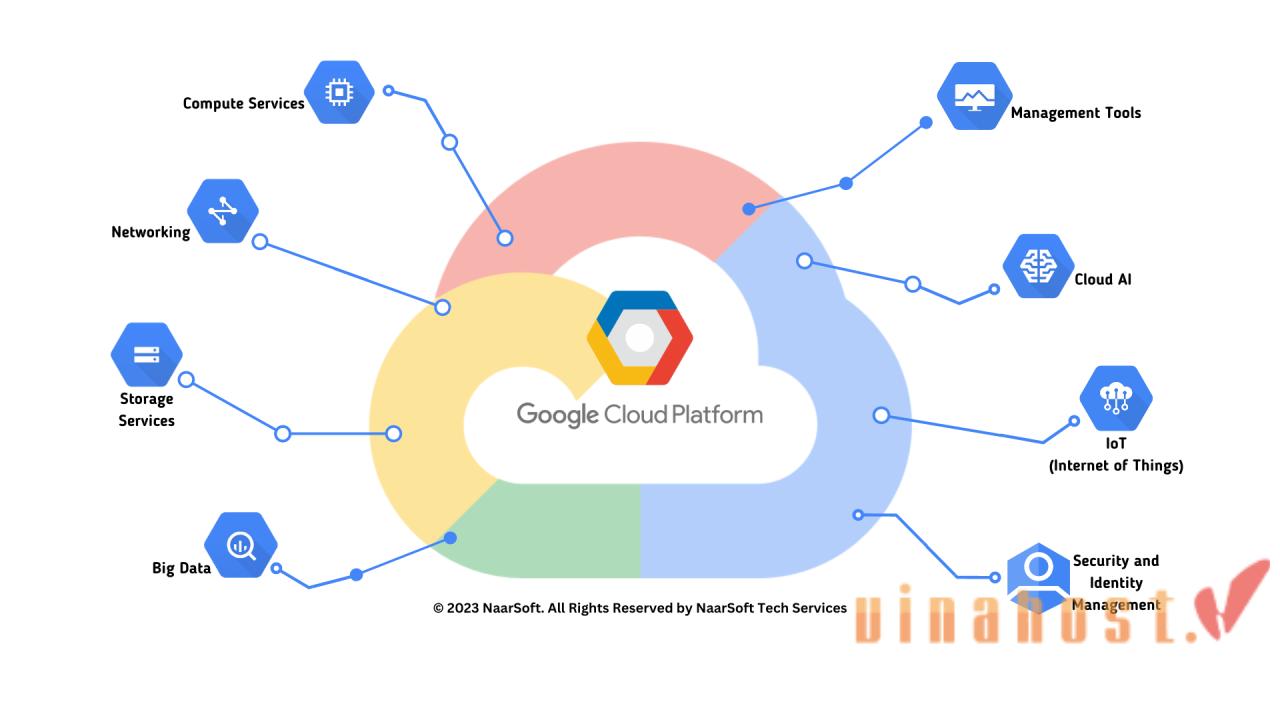
Google Cloud Platform (GCP) offers a free tier that includes a small VPS instance, making it an excellent option for testing and development. GCP provides robust infrastructure, high security, and extensive global reach, making it a top choice for those familiar with cloud environments.
- Global infrastructure: Access to Google’s extensive global network with data centers in multiple locations.
- Secure by design: Built-in security features, including automatic encryption, identity management, and robust compliance.
- Free Tier benefits: Offers a free f1-micro instance per month for 12 months, suitable for small projects and testing.
- Scalability: Easily scalable to meet growing needs, with a wide range of services available.
3.2. Microsoft Azure
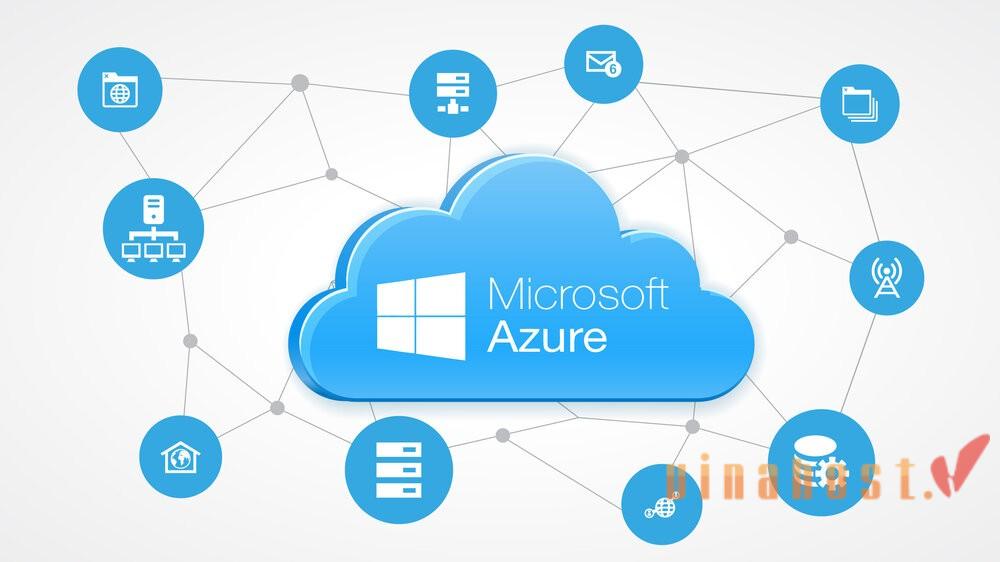
Microsoft Azure’s free tier provides access to a range of services, including a VPS instance with limited resources. Azure is ideal for those who are already invested in the Microsoft ecosystem, offering seamless integration with other Microsoft products and services.
- Seamless integration: Integrates well with other Microsoft products, such as Windows Server, Active Directory, and SQL Server.
- Hybrid cloud capabilities: Excellent for hybrid cloud environments, combining on-premises and cloud-based resources.
- Free Tier: Provides access to a B1S virtual machine for 12 months, along with credits to explore other Azure services.
- Enterprise-grade security: Offers advanced security and compliance features, including multi-layered protection and threat detection.
Also Read: What is Windows VPS? | Who Should Use a Windows VPS?
3.3. Amazon Web Services (AWS)

AWS offers a free tier with a VPS instance under its Elastic Compute Cloud (EC2) service. Known for its scalability and reliability, AWS is suitable for users looking to explore the extensive features of a leading cloud provider.
- Highly reliable: Renowned for its reliability and availability, with a 99.99% uptime SLA for its EC2 instances.
- Broad service ecosystem: Extensive range of services beyond VPS, including AI, machine learning, and big data analytics.
- Free Tier: Includes 750 hours/month of t2.micro or t3.micro instance usage for 12 months.
- Scalable: Easy to scale resources up or down as needed, with a pay-as-you-go pricing model after the free tier expires.
3.4. Oracle Cloud Free Tier
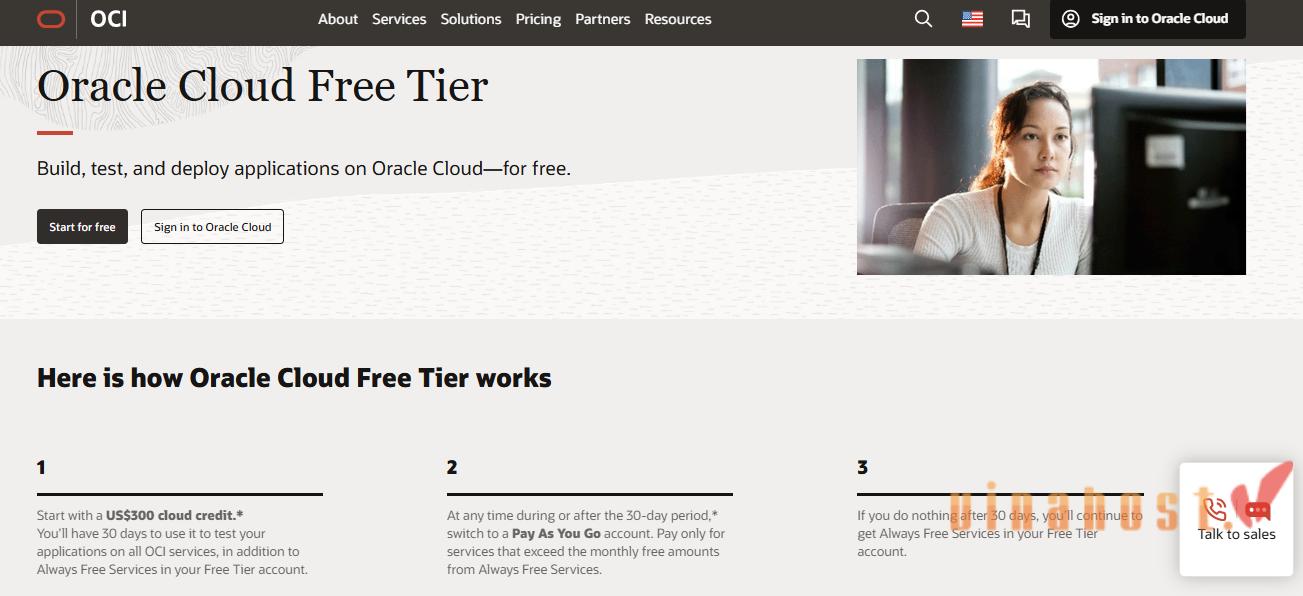
Oracle Cloud’s free tier offers two VPS instances with generous resource allocations, making it one of the more competitive free options available. It’s particularly attractive for developers and businesses looking for a longer-term, no-cost solution.
- Generous free resources: Offers two free Always Free VPS instances with 1 GB of RAM each, along with other free services like databases.
- High performance: Built on Oracle’s infrastructure, providing high performance and reliability for enterprise-level applications.
- Flexible configuration: Allows users to configure and deploy a variety of operating systems and applications.
- Extended free usage: Oracle’s Always Free tier doesn’t expire, making it suitable for long-term projects without recurring costs.
3.5. UpCloud Basic Plan
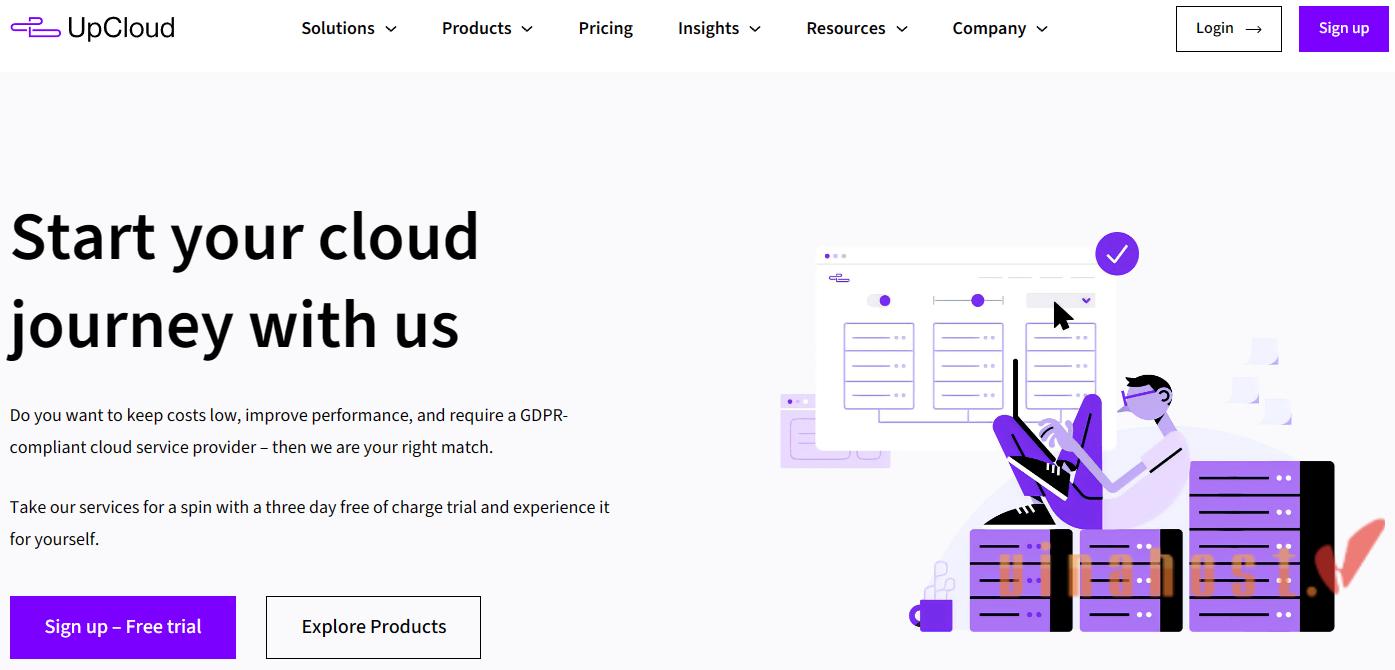
UpCloud offers a basic plan that includes a free trial with a VPS instance. Known for its high-performance infrastructure, UpCloud is a good choice for users looking to test a VPS with faster-than-average speed and reliability.
- High-speed performance: Known for its MaxIOPS storage technology, which offers faster performance compared to traditional VPS providers.
- User-friendly interface: Provides a simple and intuitive control panel for easy management of VPS instances.
- Free trial: Offers a $25 credit to explore its services, which can be used to set up a VPS with customizable resources.
- 99.99% uptime guarantee: Guarantees high availability with a robust SLA, making it reliable for critical applications.
3.6. VinaHost
VinaHost provides a trial of its free vps Vietnam services, focusing on delivering a stable and high-speed environment with reliable customer support. It’s an appealing option for businesses and individuals who want to explore VPS hosting in a localized, supportive environment.
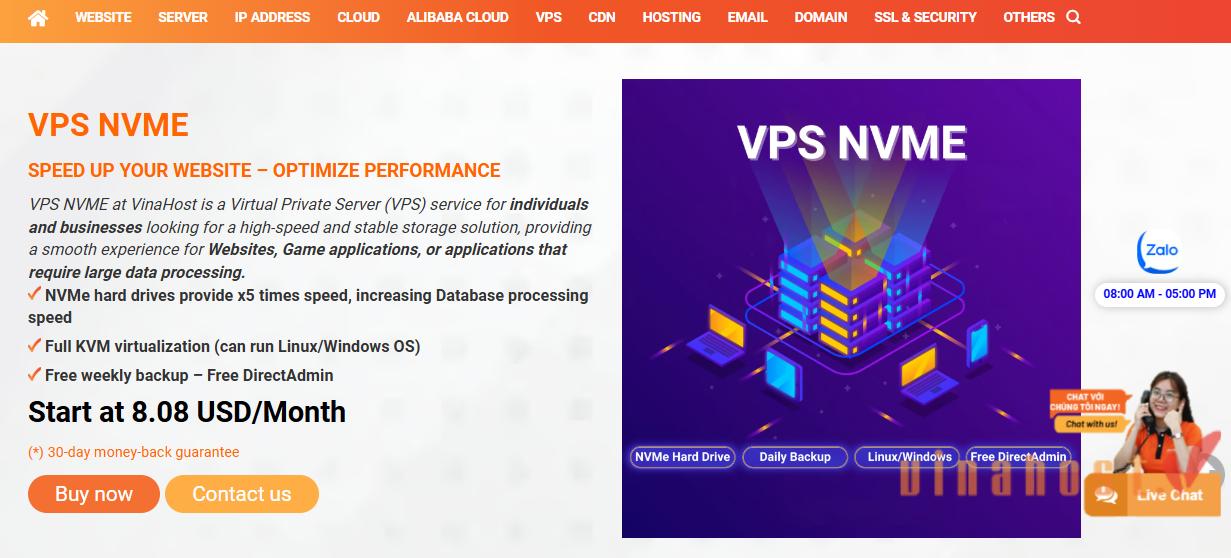
- NVMe hard drives provide x5 times speed, increasing Database processing speed
- Full KVM virtualization (can run Linux/Windows OS)
- Free weekly backup – Free DirectAdmin
| Service pack | VPS NVME 1 | VPS NVME 2 | VPS NVME 3 | VPS NVME 4 | VPS NVME 5 | VPS NVME 6 | VPS NVME 7 |
|---|---|---|---|---|---|---|---|
| Price | 8.08 USD/Month | 15.30 USD/Month | 20.40 USD/Month | 28.90 USD/Month | 41.65 USD/Month | 57.38 USD/Month | 65.88 USD/Month |
| vCPU | 1 Core | 2 Core | 3 Core | 4 Core | 4 Core | 8 Core | 8 Core |
| RAM | 1GB | 2GB | 3GB | 6GB | 8GB | 8GB | 12GB |
| NVMe | 20GB | 50GB | 60GB | 80GB | 100GB | 100GB | 100GB |
| IPv4 | 1 | 1 | 1 | 1 | 1 | 1 | 1 |
| Minimum Payment | 3 Months | 1 Month | 1 Month | 1 Month | 1 Month | 1 Month | 1 Month |
| Virtualization Technology | KVM | KVM | KVM | KVM | KVM | KVM | KVM |
| Data Transfer | Unlimited | Unlimited | Unlimited | Unlimited | Unlimited | Unlimited | Unlimited |
| Weekly Data Backup | Free | Free | Free | Free | Free | Free | Free |
| DirectAdmin | Free | Free | Free | Free | Free | Free | Free |
| SSL | Free | Free | Free | Free | Free | Free | Free |
| Automatic Activation | |||||||
| Virtualizor | |||||||
VinaHost provides a wide range of VPS services that suits your need as follows:
4. Things to Consider When Choosing a Free VPS
4.1. Resource Allocation (CPU, RAM, Storage)
The amount of CPU, RAM, and storage allocated to your VPS will directly impact its performance.
- CPU: The processing power of the VPS determines how efficiently it can handle tasks. A higher CPU core count or clock speed is generally better.
- RAM: Random Access Memory (RAM) is crucial for multitasking and handling temporary data. More RAM allows for smoother performance.
- Storage: The amount of storage space available on the VPS will impact your ability to store files, databases, and applications.
For resource-intensive tasks or high-traffic websites, these resources must be sufficient to avoid slow load times or crashes.
Therefore, you need to valuate whether the free VPS offers enough resources for your needs. If your project requires more CPU power, memory, or storage than what’s available, it might not perform well. Also, check if the provider allows easy upgrades to higher plans if you outgrow the free tier.
4.2. Uptime and Reliability
Uptime refers to the amount of time your VPS is operational and accessible. High uptime is crucial for maintaining a consistent online presence, especially for business websites or applications.
You should check the provider’s uptime guarantee and reviews to ensure reliability. Free VPS services might not offer the same uptime guarantees as paid ones, which could result in more frequent downtime. Also, consider whether potential downtime is acceptable for your project or if a more reliable option is necessary.
4.3. Operating System Options
The ability to choose your operating system (OS) allows for greater control over the software environment and compatibility with specific applications or services.
You need to look at the range of OS options provided by the free VPS. Some might only offer a limited selection of Linux distributions, while others may include Windows. Make sure the available OS aligns with your project requirements, and check if the provider allows you to change or reinstall the OS as needed.
4.4. Customer Support
Access to customer support can be critical, especially if you encounter technical issues or need assistance with server management. Free VPS plans often come with limited or no support, which can be challenging if problems arise.
It’s necessary for you to assess the level of customer support available with the free VPS. Some providers may only offer community support or basic documentation, while others might include chat or ticket-based support for free users. If you anticipate needing help, prioritize a provider that offers accessible and reliable support options.
5. How to Get Started with a Free VPS

You can successfully set up a free VPS and start using it for your projects or testing purposes by following these steps:
5.1. Choosing a Provider
- Determine what you need the VPS for – whether it’s for hosting a website, running applications, or learning purposes. This will help you decide on the necessary resources (CPU, RAM, storage) and features.
- Look into different free VPS providers like Google Cloud Platform, Microsoft Azure, AWS, Oracle Cloud, UpCloud, and VinaHost. Compare their offerings, focusing on the amount of free resources, uptime guarantees, operating system options, and support.
- Based on your research, choose the provider that best aligns with your requirements and sign up for their free VPS service.
5.2. Signing Up and Setting Up Your Account
- Go to the official website of your chosen VPS provider and look for the sign-up or free tier registration page.
- Fill in the necessary details like your name, email address, and create a password. Some providers may require additional information, such as billing details, even for free plans, to verify your identity.
- Once registered, log into your account. Navigate to the VPS or cloud services section, and select the free tier or trial option. Follow the on-screen instructions to activate your VPS instance.
- During setup, you may need to choose your server location (data center), and specify resources like CPU, RAM, and storage within the limits of the free tier.
5.3. Installing an Operating System
- After configuring your VPS, you’ll be taken to the VPS management dashboard. Here, you can start the process of installing an operating system.
- Depending on the provider, you’ll have options like various Linux distributions (e.x., Ubuntu, CentOS) or Windows. Select the OS that meets your project’s needs.
- Once the OS is installed, you’ll receive the necessary login details, such as IP address, username, and password. For Linux, use an SSH client (like PuTTY) to access your server; for Windows, use Remote Desktop Protocol (RDP).
5.4. Securing Your VPS
- As soon as you access your VPS, run system updates to ensure all software packages are up to date. For Linux, this can be done using commands like
sudo apt-get update && sudo apt-get upgrade. - Set up a firewall to control access to your VPS. On Linux, tools like
iptablesorufwcan be used to manage firewall rules. Ensure only necessary ports are open. - Change the default SSH port from 22 to something less common, disable root login, and set up SSH key authentication. This adds an extra layer of security to your server.
- Consider installing security tools like
fail2banto protect against brute-force attacks. Regularly check for and apply security patches to keep your server secure. - Set up monitoring tools to track the performance and security of your VPS. Regular monitoring can help you detect any unusual activity or performance issues early.
Also read: [HOT] Top 15 Best VPS Hosting Providers [Updated]
6. Common Use Cases for Free VPS
6.1. Developing and Testing Websites
Free VPS can be an excellent environment for web developers and designers to build, test, and refine websites before going live. It allows for experimentation with server-side configurations, software, and scripts in a controlled setting.
Developers can simulate a live environment without incurring costs, test performance and compatibility, and debug issues in a private space. It also provides a platform to try out new technologies or frameworks.
6.2. Running a Small Personal Server
Free VPS can be used to host personal projects, such as a blog, portfolio, or small community forum. It offers a more flexible and controlled environment compared to traditional shared hosting.
Free VPS is ideal for individuals or small groups who need more control over their hosting environment without the financial commitment of paid plans. It’s suitable for lightweight applications or sites with low traffic.
6.3. Learning Server Administration
Free VPS is a valuable resource for those looking to learn about server management and administration. It provides hands-on experience with configuring and maintaining a server, managing software, and understanding server security.
It’s an excellent opportunity for students, IT professionals, or hobbyists to gain practical skills in server setup, maintenance, and troubleshooting without incurring costs. It also allows for experimentation with different operating systems and server setups.
Also read: What is Linux VPS? | Choosing the Right Linux VPS Provider
7. Is Free VPS Right for You?
Assess your needs:
- Evaluate the CPU, RAM, and storage your projects require. Free VPS plans often come with limited resources, so ensure the free tier meets your needs or that you can work within those constraints.
- For small-scale projects, personal websites, or learning purposes, a free VPS might be sufficient. For more demanding applications or high-traffic sites, you might need a paid plan for better performance and scalability.
Evaluate the provider’s offerings:
- Check the amount of CPU, RAM, and storage included in the free tier. Compare this with your project’s requirements to ensure it aligns.
- Research the provider’s uptime guarantee and reliability. Free VPS plans might have less reliable uptime compared to paid options, which can affect your project’s availability.
Consider technical skills and experience:
- Free VPS often requires you to handle server management, configuration, and maintenance. If you’re comfortable with or eager to learn server administration, a free VPS can be a good fit.
- Free VPS plans may offer limited or no support. If you need extensive technical assistance, a paid VPS with better support might be more appropriate.
Check for limitations:
- Understand the performance limitations of the free VPS, such as lower CPU speeds or limited bandwidth. Assess if these limitations will impact your project’s performance.
- Some free VPS offerings are time-limited trials. Determine if you need long-term access or if the temporary nature of a free plan suits your needs.
Analyze costs and upgrades:
- Consider if there’s a clear upgrade path from the free tier to a paid plan if your needs grow. It’s important to know how easily you can scale up if required.
- If your budget is tight and the free VPS meets your requirements, it’s a cost-effective option. However, if you anticipate needing more resources or better support, planning for a paid VPS might be more practical.
Test the service: If the provider offers a trial period or free tier, use it to test the service. Evaluate performance, ease of use, and whether it meets your expectations before committing to a long-term solution.
Also read: [UPDATED] TOP 20 Best VPS Control Panel Free & Paid
8. FAQs
8.1. Are free VPS plans truly free forever?

Free VPS plans are often not truly free forever. They typically come with limitations such as reduced resources (CPU, RAM, storage), time-limited trials, or usage restrictions. While many providers offer free tiers or trials, these are usually intended to provide a taste of the service, and continued or expanded use may require transitioning to a paid plan.
Additionally, free plans often come with limited support and may incur extra costs for additional features or resources. So that you should always check the provider’s terms to understand what is included and any potential charges.
8.2. Can a complete beginner handle a free VPS?
A complete beginner can handle a free VPS, but it requires some effort to get up to speed. Many free VPS providers offer user-friendly interfaces and documentation to help new users. However, managing a VPS involves tasks like setting up and configuring the server, installing software, and ensuring VPS security.
Beginners should be prepared to spend time learning basic server management skills, such as using SSH for Linux servers or RDP for Windows servers. Access to tutorials, community forums, and provider support can be very helpful. Starting with a provider that offers extensive documentation and a user-friendly control panel can make the process easier for newcomers.
Learning to manage a VPS is a gradual process. With patience, practice, and the right resources, even a complete beginner can successfully utilize a free VPS for their projects or learning purposes.
8.3. What are the security risks associated with free VPS?
While free VPS plans can be a valuable resource for individuals and small businesses, they come with certain security risks that need to be addressed:
- Limited security features: Free VPS plans often have fewer built-in security features compared to paid options. This can include less robust firewalls, fewer security updates, and limited intrusion detection systems.
- Shared resources: Some free VPS services may use shared resources, which can lead to vulnerabilities if other users’ activities affect the server’s performance or security.
- Less frequent updates: Free VPS providers might not offer regular or timely updates to their software, leaving servers potentially exposed to known vulnerabilities and exploits.
- Limited support: Free plans usually come with minimal or no customer support. In case of a security breach or technical issue, you might have limited assistance in resolving the problem.
- Potential for misconfiguration: Beginners might accidentally misconfigure security settings, such as open ports or weak passwords, making the VPS more vulnerable to attacks.
- Lack of advanced security measures: Features like DDoS protection, advanced encryption, and secure backup options might be unavailable or limited in free VPS plans.
- Potential for abuse: Since free VPS are accessible to anyone, they might be used for malicious purposes, which could impact the reputation or security of your own projects if shared infrastructure is involved.
To mitigate these risks, you need to actively manage and secure your VPS by implementing best practices such as regular updates, strong passwords, proper firewall configurations, and monitoring for suspicious activities.
Also Read: The difference between Managed VPS and Unmanaged VPS
8.4. How do I choose the right free VPS provider?
To choose the right free VPS provider, you need to evaluate the resource allocation to ensure it meets your project’s needs, including CPU, RAM, and storage limits. Also check the provider’s uptime guarantees and reliability through user reviews and their track record.
You should ensure that the provider offers the operating system you need and assess the level of support and documentation available. Lookind for robust security features and a user-friendly management interface, researching the provider’s reputation and ensuring there’s a clear path for upgrading to a paid plan if necessary are also necessary.
By considering these factors, you can select a free VPS provider that aligns with your requirements and provides reliable, secure service.
8.5. When should I consider upgrading from a free VPS to a paid plan?
You should consider upgrading from a free VPS to a paid plan in the following situations to handle your needs efficiently and supports the growth and demands of your projects:
- Resource limitations: If you consistently exceed the free VPS’s resource limits (CPU, RAM, storage), and it impacts performance or scalability, upgrading to a paid plan will provide additional resources and capabilities.
- Performance issues: When you experience slow performance, high latency, or downtime that affects your projects, a paid plan often offers better performance and reliability.
- Increased traffic: If your website or application attracts more visitors and the free VPS can no longer handle the increased load effectively, a paid plan will provide the necessary resources to manage higher traffic.
- Need for advanced features: If you require advanced features such as better security options, automated backups, or more extensive technical support, a paid plan usually offers these enhancements.
- Enhanced support requirements: When you need more robust customer support than what’s available with the free plan, a paid VPS often includes comprehensive support options.
- Scalability needs: If you anticipate future growth and need more scalable options, a paid plan allows for easier upgrades and additional resources.
- Long-term projects: For long-term or critical projects, upgrading ensures a stable, secure, and high-performance environment, which is crucial for maintaining service quality.
Also read: What is the difference between VPS and Dedicated Server?
9. Conclusion
While a free VPS can be an excellent starting point, it’s important to be aware of its limitations and plan for potential upgrades as your project scales. By choosing the right provider and understanding the scope of free VPS offerings, you can make the most of this resource, gaining both practical experience and valuable insights into the world of virtual private servers!
VinaHost is a professional provider with more than 10 years of experience in the fields of Hosting, Server, VPS, Cloud, Website, Email, SSL, License and other services. If you want to register the VPS Vietnam free, don’t hesitate to contact us for help:
- Email: support@vinahost.vn
- Livechat: https://livechat.vinahost.vn/
- Hotline: 1900 6046
Find out more articles at our Blog.
What is Thailand VPS Hosting? Top 8 benefits of Thailand VPS Hosting
What is Cambodia VPS Hosting? | Everything you need to know
What is VPS Indonesia? Experience in Choosing the Best VPS Indonesia
What is Minecraft VPS Hosting? | Top 6 Minecraft VPS Hosting Providers




















